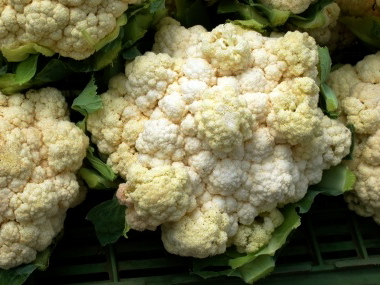
reference-image, l
(post, Caroline Cummins)
Once upon a time — like, say, around 1975 or so — people who were trying to eat vegetarian meals tended to serve casseroles covered with cheese. But within 15 years or so, the vegetarian attempt had shifted, from smothering everything in a blanket of dairy to that all-purpose dish, the stir-fry. Now, don't get me wrong; I like cheese, and I like stir-fries. But I can't help but wonder if, like me, people were turned off in droves to "vegetarian cuisine" by sad-sack cheese glops and mushy, watery stir-fries. Buying fresh, local, organic, etc., produce is one thing; figuring out what to do with it in the kitchen is another. When I look back on my high-school and college days, I recall eating what feels like an endless succession of meals in which under- or overcooked vegetables were consumed with righteous fervor, often accompanied by comments like, "Wow, this is just so good for you!" True, maybe, but telling ourselves it was healthy didn't necessarily make it taste any better. [%image reference-image float=left width=400 caption="Bland? No, cauliflower can be the flavorful center of a vegetarian meal."] Which is why I was so pleased with the meal my husband cooked up the other night. It began, as so many of our summer and fall meals begin, with an inventory of the random offerings of our CSA for the week — in this case, cauliflower, ears of corn, onions, and spinach, among other things. My husband then rummaged around in the indexes of our cookbooks, looking for interesting dishes that used these ingredients. He struck gold with Madhur Jaffrey's World Vegetarian, turning up a recipe for cauliflower cooked with onions and corn and a yogurt condiment/salad mixed with toasted rice and wilted spinach. He put a pot of rice on to simmer and got to work making the other two dishes — first the spinach, then the cauliflower, because the spinach needed to cool a bit before getting mixed with the yogurt. Forty minutes or so later, when he served it up, I took a forkful of all three — rice, cauliflower, and yogurt stuff — and tasted. It was good. Really good. I don't even usually like cauliflower, much less mixed with corn, but dabbed with the spicy-spinachy-yogurt dip, it was delicious. Which reminded me of all those blah veggie meals I had suffered through years before. What was different about this one? Two things, I think: An interesting (and appealing) combination of vegetables and spices, and a careful cooking of the produce so that it wasn't too crunchy or too gluey. Combining flavors and using heat appropriately are both skills that take a good deal of practice to acquire, and if you didn't grow up cooking — a not-infrequent problem among my high-school and college pals — you'll inevitably have a lot of slips before successes. A cousin of mine recently decided to go vegetarian. She chose a strategy built around flavor instead of health: vegetarian dishes from cuisines that have a long history of tasty vegetarian cooking, such as Indian (my husband's choice for the evening) or Mexican. This strategy won't guarantee that you actually cook that pot of pinto beans correctly or take the toasting curry spices off the stove soon enough. But it will help you get a better idea of interesting vegetarian flavors that go well together.

reference-image, l